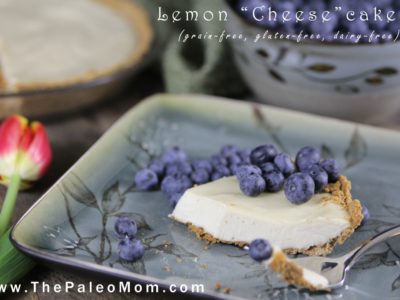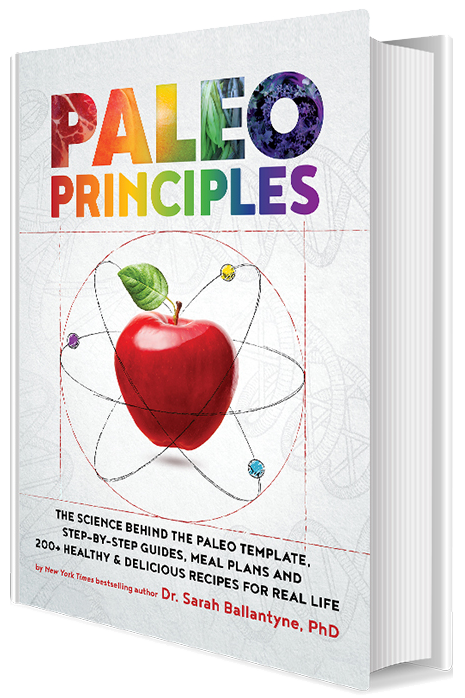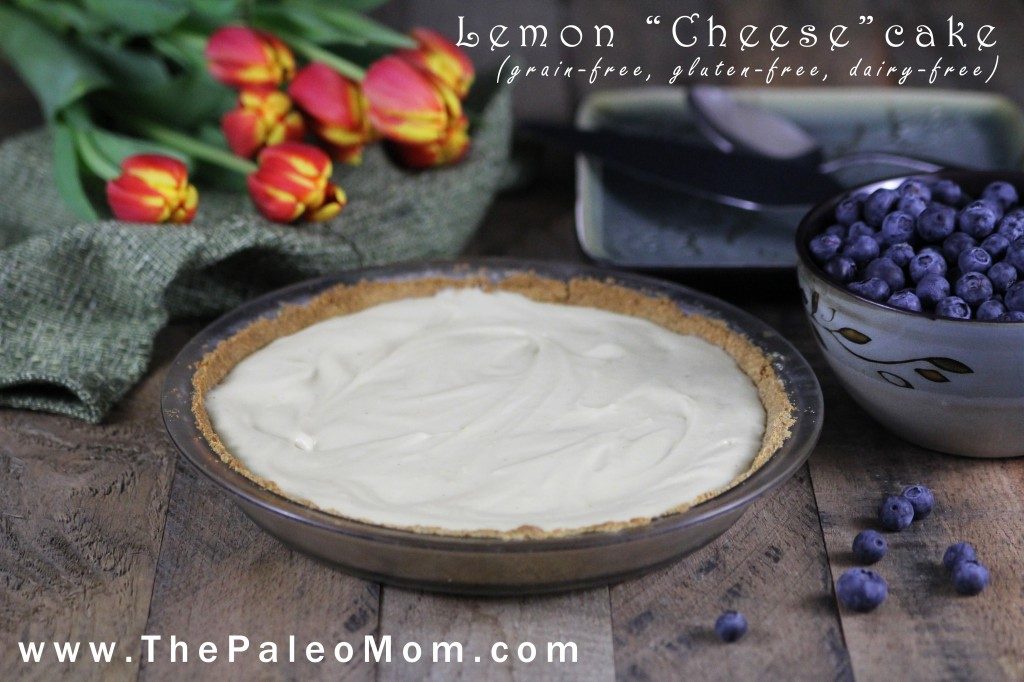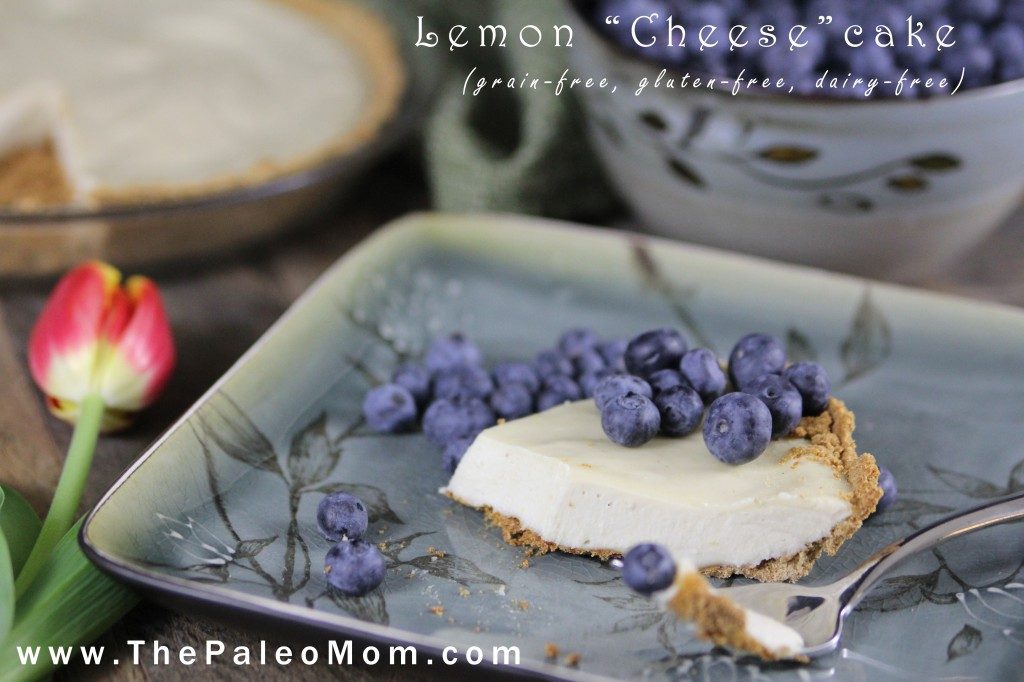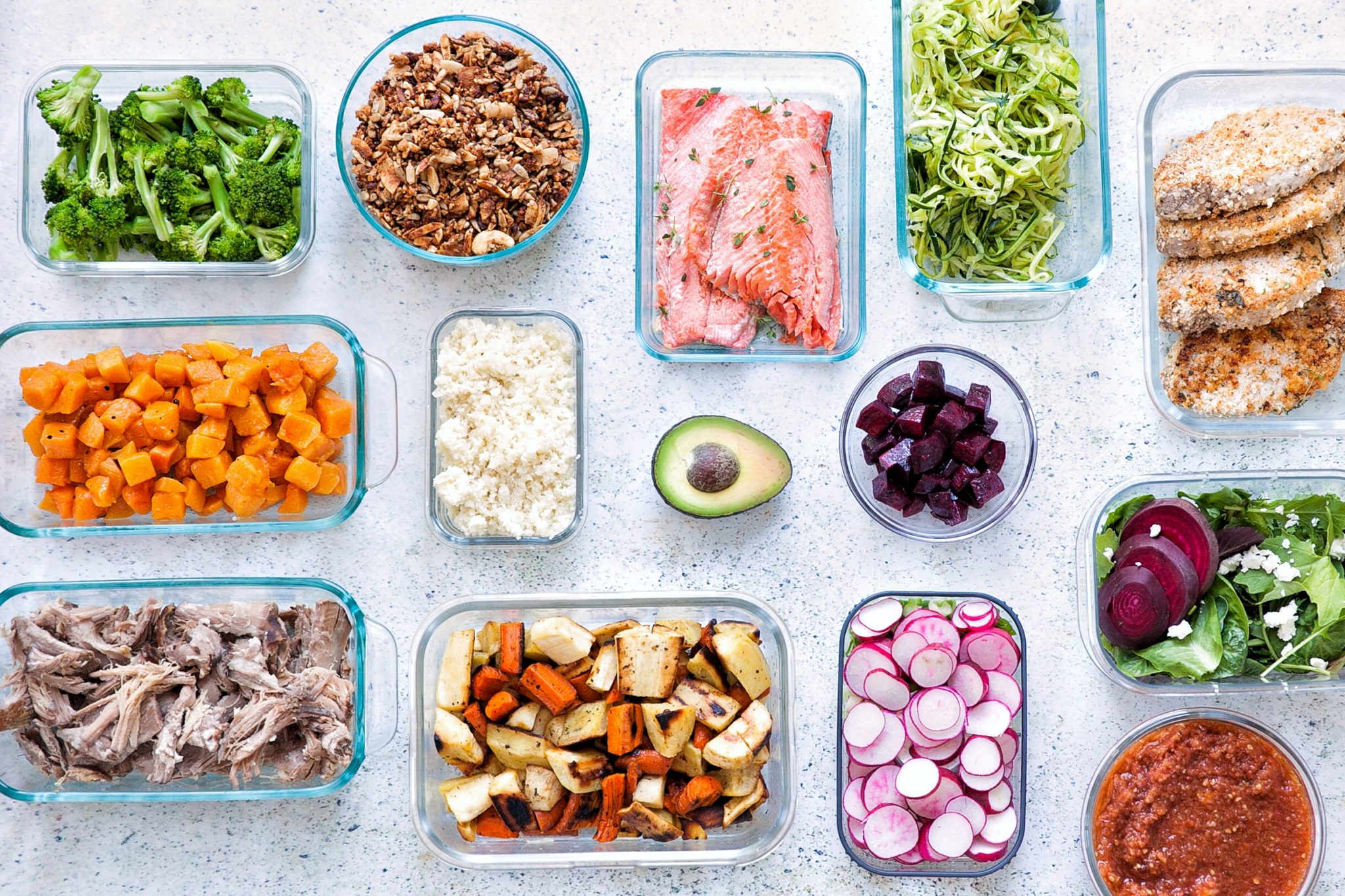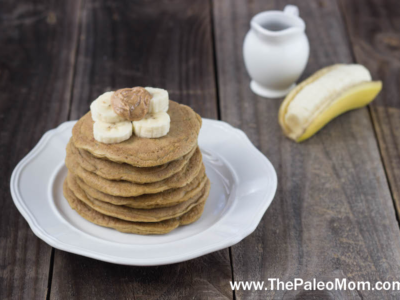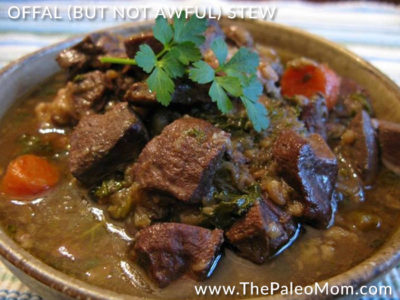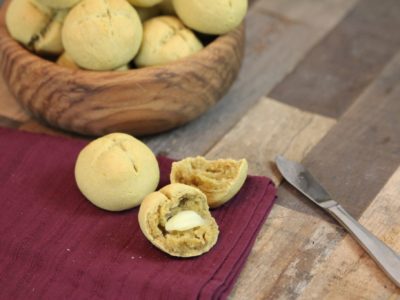One of my husband’s favorite desserts before our Paleo journey began was cheesecake. I rarely made it at home (and if I did, it was the standard graham cracker crust with lemon cheese cake filling following the directions on the cream cheese box), but it was guaranteed what he ordered every time we ate in a restaurant. I think he was (is?) something of a cheesecake connoisseur, always preferring the denser custard-like cheesecakes to the more ethereal whipped topping style, and typically preferring a simply-flavored custard which could then be paired with fresh fruit or fruit coulis. I freely admit that while my husband always ordered cheesecake (and I always had a bite), I was more reliably a “whatever on the dessert menu has lots of chocolate in it” kind of gal.
Well, when it came time to celebrate some good news for him, it seemed like as good excuse as any to try a re-creation of this old favorite. And I think being able to enjoy lemon cheesecake with fresh blueberries for dessert that night might have even topped the good news we were celebrating!
It seems strange to me to make cheesecake without, well, cheese. And certainly, if you follow a primal diet or lacto-Paleo diet, making a cheesecake that fits within your diet is actually pretty easy (the trickiest part is the crust, but there’s tons of recipes out there for different options). But, both my youngest daughter and I are very sensitive to casein, and while I more often than not make desserts that I can’t eat but my family can, I wasn’t about to create something that my youngest daughter would have to miss out on too. So, voila! A Paleo-friendly, grain-free, dairy-free “cheese” cake. Oh yeah, and it’s delicious!
Gelatin gives the filling a lovely heft, and it holds up well even left out of the fridge. The filling is not particularly sweet (which I love!), but you could easily adjust the sweetness by adding an extra tablespoon or two of honey. The combination of cashews and lemon juice replicate the cream cheesiness well (and the flavor is even better if you use coconut milk yogurt or kefir [homemade or store-bought] in place of plain coconut milk). I don’t think any other nut works quite the same.
For the crust, I modified my recipe for Paleo Graham Crackers. The use of chestnut flour gave it a bit more density and let it hold together even as a thin crust beautifully. If you’d rather stick with the more stereotypical almond flour and coconut flour as ingredients and have a softer, crumblier crust, you can make a half batch of Graham Cracker dough, mold it into your shallow pie dish and bake as per the instructions below. You could also easily make this in a spring form pan with crust just on the bottom (I’d suggest doubling the filling).
Servings: 8
Ingredients (crust):
- 2 Tbsp palm shortening (you could also use lard, butter or ghee), melted
- 1 1/2 Tbsp honey
- 1/4 tsp cinnamon
- 3/4 cup chestnut flour
- pinch salt
- 1/8 tsp cream of tartar
- 1/8 tsp baking soda
- Preheat oven to 300F.
- Combine all of your ingredients in the bottom of a shallow 8″ or 9″ pie plate. Use your fingers to work it into a dough (it will be quite dry and crumbly, that’s okay). Then pat it down to line the pie shell (embrace your inner playdough-loving child). It will be quite thin, and that’s okay. Now, grab a fork and stab little holes all over the crust (this helps it be a bit more crumbly than solid cookie).
- Bake crust for 13-14 minutes, until starting to go golden brown on the bottom. Remove from the oven and let cool completely.
Ingredients (Filling):
- 2 cups raw cashews
- 1 cup full fat coconut milk (or substitute coconut milk yogurt or coconut milk kefir)
- 1 Tbsp gelatin
- 4 Tbsp honey
- 1 Tbsp lemon zest
- 3 Tbsp lemon juice
- pinch salt
- Soak cashews in enough cool water to cover for 2 hours (or more). Drain.
- Meanwhile, bloom gelatin in coconut milk (this just means sprinkling the gelatin over the top of the coconut milk and waiting for it to go translucent as it absorbs liquid) in a small saucepan. Heat over medium heat until just starting to simmer and remove from heat. (If you’re using coconut milk yogurt or kefir and want to protect the probiotics, add a thermometer to your pot. Gelatin dissolves at 82F and as long as you keep your temperature below 100-105F, your probiotics will survive. I’d aim for about 90F just to make sure you get all that gelatin to dissolve.)
- Pour coconut milk, soaked cashes and remaining ingredients into a blender. Blend on high until completely creamy (this will take about a minute in a high-powered blender like a Blendtec or a Vitamix).
- Pour filling mixture into crust and spread out evenly. Chill until set, about 3-4 hours in the fridge or about an hour in the freezer.
- Serve with fresh fruit.

